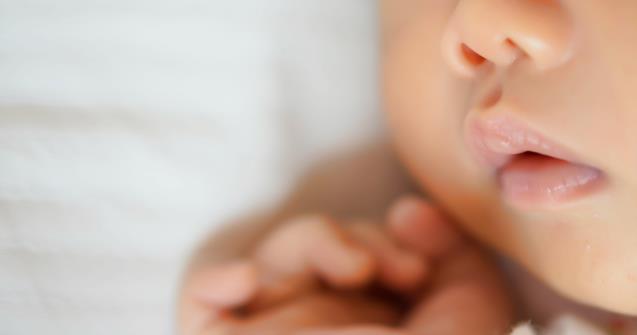
My mouth
Activities for toddlers and babies
Draw children’s attention to their mouth and provide them with opportunities that will help them become more aware of everything they can do and experience with this part of their body.
AREA SETUP
Cut several mouths out of magazines and catalogues and glue them on a large piece of cardboard. Display it on a wall to introduce this theme.
ROUTINES AND TRANSITIONS
Washing your mouth
Purchase several unbreakable mirrors. After lunch, give each infant and toddler a mirror. Let them look at their reflection as they wash their mouth with a moist facecloth.
SENSORY ACTIVITIES (smell)
Soft lips that smell delicious
Purchase several different lip balms, making sure to select ones with different scents and flavors. Hold the lip balms under each child’s nose one at a time so they can smell them. Let each child pick one lip balm and apply it to their lips. You will need one lip balm per child to avoid contamination.
SENSORY ACTIVITIES (touch)
Teething toys in a bin
Fill a bin with a variety of colorful teething toys. Let infants and toddlers take turns manipulating the items. Let them put the toys in their mouth. That is how young children explore textures, shapes, and the concept of size. Disinfect the toys before setting the bin in front of another child.
SENSORTY ACTIVITIES (look)
In front of the mirror
Sit in front of a large mirror with your group and encourage them to look at their mouth. Invite them to open their mouth so they can see their teeth and their tongue. Name the different parts of their mouth. Variation: Toothbrushing. Encourage children to look at their reflection in the mirror and open their mouth to see their teeth. Give each child a small toothbrush. You can provide moist facecloths for younger children. Show children how they can clean their teeth with their toothbrush or facecloth.
ARTS & CRAFTS
Modeling dough mouths
Print and laminate head silhouettes. Each silhouette could have two eyes and a nose, but they mustn’t have a mouth. Set the heads on the table. Use modeling dough to represent a mouth and deposit it on one of the heads. Let older toddlers create mouths with the modeling dough and deposit them on the silhouettes as you did. Younger children can simply manipulate the modeling dough as they wish.
MORAL AND SOCIAL ACTIVITIES
Blowing kisses
This activity is perfect for when parents leave in the morning and arrive at the end of the day. Encourage infants, toddlers, and parents to blow kisses to each other.
My doll’s mouth
Collect several dolls and stuffed animals. Add small bowls, spoons, and baby bottles. Invite children to feed the dolls and stuffed animals.
Washing my doll’s mouth
Use a makeup pencil to draw on the mouth of dolls that have a plastic head. Tell your group the dolls’ mouths are dirty because they just finished eating their lunch. Provide moist facecloths and invite children to wash the dolls.
COGNITIVE ACTIVITIES
What puppets eat
Set several puppets on the floor along with a variety of plastic food items and toys. With your group, feed the puppets. Every time a puppet eats a food item, have it say, “Yummy, that’s good!” Whenever a puppet eats a toy, have it say, “Yuck, that doesn’t taste good at all!” The puppet can then spit the toy out.
PHYSICAL ACTIVITY AND MOTOR SKILLS
Facial exercises
Making silly faces is a great way to help keep facial muscles supple. Supple facial muscles will make it easier for children to learn how to pronounce words. Have fun moving your mouth in every direction with your group. Stick out your tongue, make fish faces, smile in an exaggerated way to show your teeth, etc.
LANGUAGE ACTIVITIES
Picture book
Photograph mouths at work. For example, you could take a picture of a child licking an ice cream cone, a mother applying lipstick, a father taking a bite out of an apple, a baby exploring a teething toy, etc. Print and laminate the pictures and use them to create a unique picture book you can look at with your group. Name what you see in each picture.
Chantal Millette
Early childhood educator
Educatall.com is not responsible for the content of this article. The information mentioned in this article is the responsibility of the author. Educatall.com shall not be held responsible for any litigation or issues resulting from this article.

 Home
Home Theme activities
Theme activities
 Babies and toddlers
Babies and toddlers
 Arts and crafts
Arts and crafts
 Science
Science
 Creative recipes
Creative recipes
 Tips and tricks
Tips and tricks
 Special needs
Special needs
 Extra activities
Extra activities
 Educ-TV
Educ-TV
 Newsletter
Newsletter  Online store
Online store Educatall club
Educatall club

